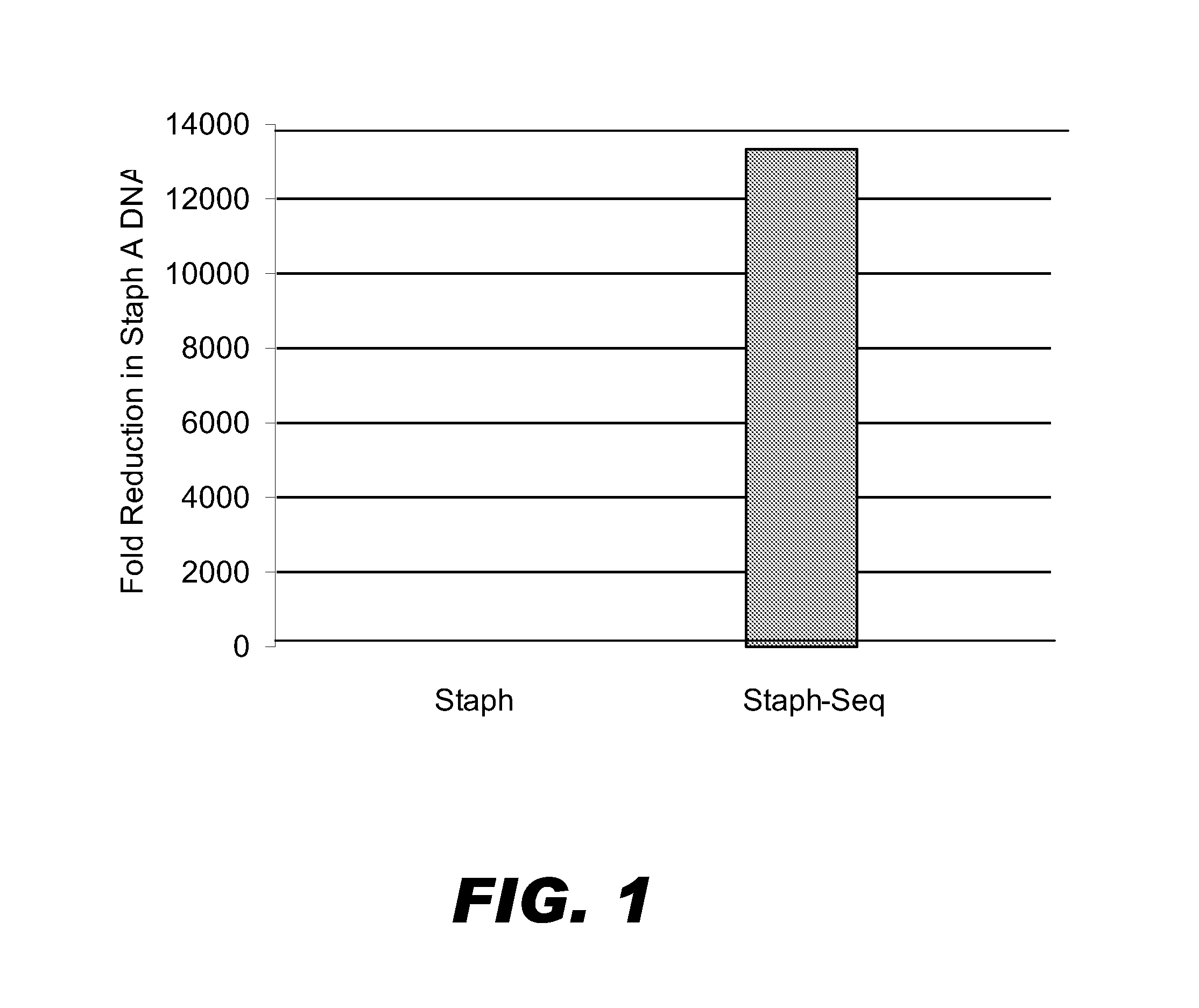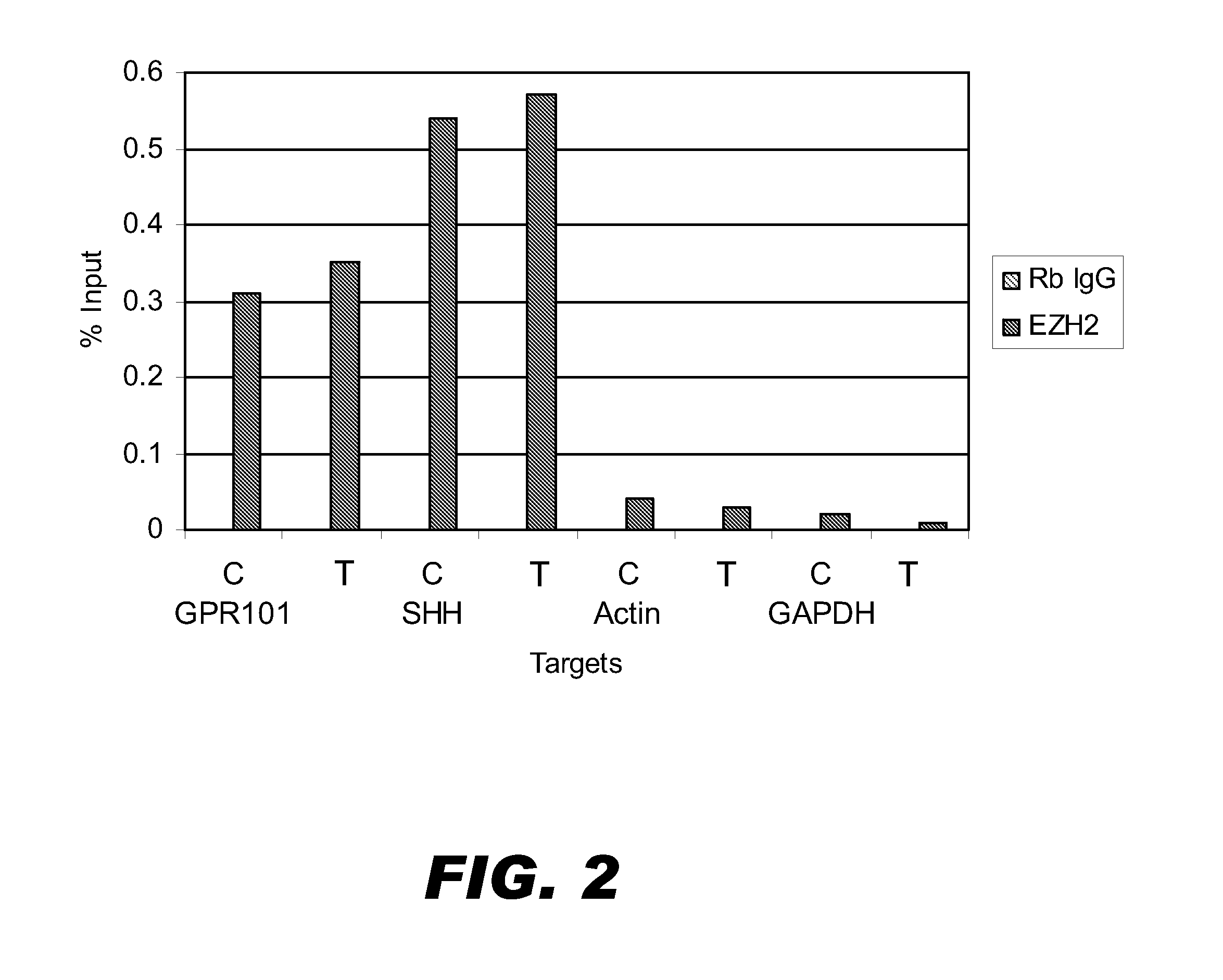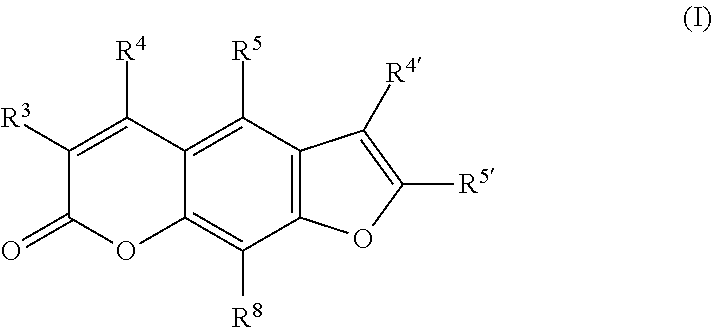Cells for chromatin immunoprecipitation and methods for making
a technology of chromatin and immunoprecipitation, which is applied in the field of bacteria cells, can solve the problems of staphylococcus /i>dna interference with analysis, contamination of dna-protein complexes isolated with staph a cells,
- Summary
- Abstract
- Description
- Claims
- Application Information
AI Technical Summary
Benefits of technology
Problems solved by technology
Method used
Image
Examples
example 1
Aminomethyltrioxsalen Treatment of Staphylococcus areus Cells
[0070]The following example details crosslinking of the chromosomal DNA of heat-treated, formaldehyde-fixed, protein A-containing Staphylococcus areus (Staph A) cells by contact with 4′-aminomethyl trioxsalen (AMT) and UVA light. The starting material was two bottles of 10 g of Staph A cells. Each white Staph A pellet (settled at the bottom of the supplied bottle) was resuspended in 50 mL of dialysis buffer (2 mM EDTA, 50 mM Trizma-HCl, pH 8) by pipetting repeatedly with a 25 ml pipette. Each Staph A suspension was transferred to a 50 ml plastic conical centrifugation tube and centrifuged at 5645×g for 5 minutes at 4° C. (e.g., with a JA25.5 fixed angle rotor in a Beckman J2-HS centrifuge at 6000 rpm).
[0071]The supernatants were removed and each cell pellet was resuspended in 20 ml of dialysis buffer using a glass rod and by pipetting repeatedly with a 25 ml pipette. Then the volume in each tube was brought to 40 ml with d...
example 2
Reduction of Amplifiable Staphylococcus DNA in ChIP Eluates
[0079]The Staph-Seq cells prepared in Example 1 were used to isolate DNA-protein complexes using standard procedures (i.e., ChIP). Untreated (control) Staph A cells were also used to isolate DNA-protein complexes. The amount of amplifiable contaminating Staphylococcus DNA in each preparation was estimated by qPCR using primers specific for Staphylococcus RNA coding sequences. The results are presented below in TABLE 1.
TABLE 1Contaminating DNA in ChIP complexes preparedwith untreated and AMT-treated cellsFoldSampleCtΔCtReductionStaph A (control)21.301Staph-Seq (AMT-treated)35−13.713,308
[0080]The amount of contaminating Staphylococcus DNA was reduced by more than 13.000-fold (also see FIG. 1), indicating that amplifiable chromosomal Staphylococcus DNA in the AMT-treated cells was substantially reduced.
example 3
Improved ChIP-Seq Using Staph-Seq Cells for ChIP
[0081]ChIP assays were performed using about 200 million DU145 cells to isolate DNA binding sites of EZH2, which is a rare, low abundance transcription factor. The DNA-EZH2 complexes were immunoprecipitated using an antibody against EZH2 and the DNA-EZH2-antibody complexes were isolated using either untreated Staph A cells or AMT-treated Staph-Seq cells (prepared as detailed in Example 1). GPR101 and SHH are known targets of EZH2 in DU145 cells. In contrast, actin and GAPDH are not EZH2 targets. The specificity of the ChIP assay was validated by qPCR using primers specific for the known targets and non-targets. As shown in FIG. 2, both types of cells isolated complexes comprising the known EZH2 targets and lacking the non-targets.
[0082]Both preparations were used to prepare libraries, which were then subjected to Solexa sequencing. As shown in TABLE 2, the use of Staph-Seq cells gave a 23% improvement in the amount of useful (i.e., map...
PUM
| Property | Measurement | Unit |
|---|---|---|
| Temperature | aaaaa | aaaaa |
| Temperature | aaaaa | aaaaa |
| Temperature | aaaaa | aaaaa |
Abstract
Description
Claims
Application Information
 Login to View More
Login to View More - R&D
- Intellectual Property
- Life Sciences
- Materials
- Tech Scout
- Unparalleled Data Quality
- Higher Quality Content
- 60% Fewer Hallucinations
Browse by: Latest US Patents, China's latest patents, Technical Efficacy Thesaurus, Application Domain, Technology Topic, Popular Technical Reports.
© 2025 PatSnap. All rights reserved.Legal|Privacy policy|Modern Slavery Act Transparency Statement|Sitemap|About US| Contact US: help@patsnap.com



